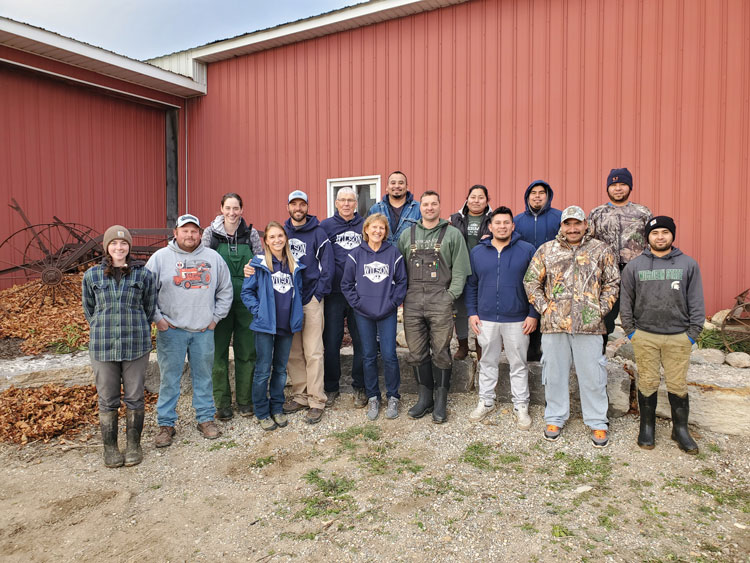
Dry cows are kept in freestall barns and put into separate groups, far-off and close-up,” said Brent Wilson of Wilson Centennial Farms near Carson City, Mich. “Both groups are bedded with clean, fresh sand once a week and scraped once a day with a skid steer. The barns are equipped with temperature-controlled fans, and the far-off barn has misters over the headlocks,” continued the co-owner of one of the six herds to win this year’s National Dairy Quality Awards from the National Mastitis Council.
Perhaps the best enhancement for their dry cows falls into the area of stall design.
“Far-off stalls are housed-in stalls 48 inches wide, and close-up are 50 inches wide. All stalls are usable and maintained for cow comfort,” continued Wilson.
All six of this year’s Platinum winners of the National Mastitis Council’s awards share additional insight in this Hoard’s Dairyman Intel as well as the Round Table found on pages 59 to 63 of the January 25, 2021, issue of Hoard’s Dairyman. This year’s competition drew 115 nominations.
Here are additional responses to the question, “What about dry cow comfort?”
Blue Star, Middleton, Wis.: We generally follow the same procedures as the milking herd and take the same approach to adding bedding and grooming stalls.
Christop Farms, Shiocton, Wis.: For dry cows, deep-bedded sand freestalls are groomed daily and sand is added weekly. Stalls are sized appropriately for our dry cows to keep them both comfortable and clean. Alleys are scraped daily. The steam-up group is housed on a bedded pack and is managed to add fresh bedding weekly. Cows are given an ample sized pack to provide enough space to all animals.
Country Aire, Greenleaf, Wis.: Dry cows are kept in a tunnel-vented barn that is bedded with recycled sand two to three times a week. The sand comes from our sand settling lanes and it is leveled out with a rake on a skid steer two times per week. Western-hydrated barn lime is also applied to the ends of the stall two times per week. The manure is scraped away by a push tractor with a tire scraper three times a day into the flume system. The flume carries the slurry to the sand settling lanes and allows us to reuse our sand.
Riverside Dairy, Reedsville, Wis.: In order to keep dry cows clean and comfortable, we house them in two and three-row naturally ventilated, curtain sidewall freestall barns with high-volume, low-speed fans over the feed aisles and circulating fans over the stalls. Like the milking herd, all pens have temperature-controlled misters, and the holding area has exhaust and circulating fans. All stalls have pasture mats with screened sand bedding on top. Mattresses are hand raked twice daily and any soiled sand is removed, while fresh sand is raked back to provide a clean, dry, and even place for the cows to lie. Sand is added with a sandshooter twice weekly.
UW Marshfield, Stratford, Wis.: Dry cows at the university herd reside in a bedded compost-pack barn. The pen area is sloped; the lying area is higher up than the feedbunk and scrape alley. The bedded pack is composed of sawdust and is turned daily and bedded daily with kiln-dried sawdust.
Close-up heifers and cows are moved about 14 days before their due date to a calving barn (a pack barn). These cattle are bedded daily with clean straw. Manure is manually removed from calving pens, and scrape alleys are cleaned daily. The entire pack is thoroughly cleaned out every four weeks.
Hoard’s Dairyman is honored to co-sponsor the National Dairy Quality Awards with the National Mastitis Council. The program is possible thanks to sponsorship from Boehringer Ingelheim, Cargill, Conewango, Ecolab, GEA, and IBA.








